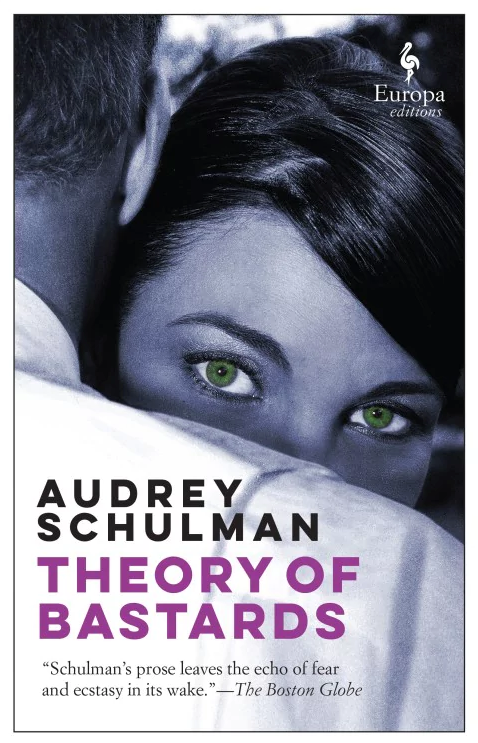Theory of Bastards: the short distance between man and animal
Audrey Schulman’s novel explores a dizzying array of topics, from modern technology to primal relationships. It doesn’t always hit the mark, but when it does it soars.

There is something slightly off-putting about our simian cousins – those gorillas, chimpanzees, and bonobos who seem so human-like and yet also so distant from us. We know that many such species behave in ways similar to humans – they exhibit complex social behaviour, are self-aware, and are able to communicate with us to a remarkably proficient degree. At the same time, however, there remains a distance between them and us, which catches at the back of the mind – perhaps it’s a sense of the uncanny, or how they remind us, unwelcomely, how we are all merely animals.
This idea of distance is present throughout Audrey Schulman’s Theory of Bastards, a dystopia-cum-drama-cum-science-fiction book based off a mountain of scientific research. Early on in the novel, we’re presented with a reminder of just how powerful these creatures can be: Dr. Frankie Burk is a brilliant young evolutionary scientist, fresh from winning a MacArthur Genius Grant, who has come to a research facility in a near-future America to study the mating habits of bonobos. On her second day at the Foundation, she tries out a carnival-style strength test game, to see which animal she’s equivalent to – she gets the ring-tailed lemur, which weights only five pounds. The bonobos she’ll be studying weigh 70, meaning she’ll need to tread carefully.
But, of course, Frankie is also hampered by the fact she’s recovering from radical surgery to try and cure her endometriosis, which has caused her excruciating pain throughout her life, and hardened her attitudes to those around her.
Schulman weaves a complex narrative, looping back and forth between Frankie’s early life, warped by her daily pain, and her current research, related to her groundbreaking ‘theory of bastards’ – the idea that women cheating on their partners has evolutionary benefits for the species as a whole. Alongside this we’re presented with a romance plot, a survival drama, and a quasi-dystopian backdrop. It proves to be slightly too much at times, with different themes developed half-heartedly in tandem, rather than individually and fully.
“Fluid descriptions of pain recur through the novel, and are its strongest moments”
Schulman writes with a short, sharp prose style – contracted sentences fire out rapidly, drawing the reader’s attention on. This method really comes into its own with the descriptions of pain and endometriosis Schulman uses throughout the book – it’s probably one of the only books I’ve read that deals so rawly with the condition, which affects 10% of women across the globe. Schulman explores how pain can be beneficial – “the mother to us all, slapping us back from the hot stove, forcing us to put down the sharp knife…training care into our bones” – but that the chronic pain felt by Frankie “was not a mother. It was an abuser…it wrapped itself around the ribs, settled on the shoulders, a weight to be borne…pain like this did not open up the world; it erased it bit by bit. Over time it erased her love of yard sales, of eating, of the simple act of laughing.” Fluid descriptions like this recur throughout the novel, and are by far its strongest moments.
There are a number of developments that Schulman doesn’t quite follow through – the world Frankie and others inhabit is a near-future where self-driving cars are a practical reality, and everyone has implants that essentially graft a smart phone directly into their eyes. The hysteria around the technology never quite reaches a fever pitch, which is a good thing, since it makes the developments that much more believable. But references to outdated bioware, and mysterious symbols that begin accumulating on Frankie’s viewscreen – which we presume must symbolise something much more sinister than the need for an update – fail to develop into anything substantial. Similarly, we begin the novel expecting to get more of a backstory of her research assistant Stotts – an ex-soldier who brings a quiet reserve to the research project – but this isn’t forthcoming.
There is a clear division between the two main sections of the book. Frankie starts by gaining the trust of the bonobos she is studying, gradually getting more and more integrated in their clique. It is at this point where Schulman is at her best, backed up by a dizzying amount of research that she outlines in an addendum at the end of the novel. A catastrophe midway through the novel shifts the tone to a survival drama, highlighting in the process how reliant we all are on our technology. It doesn’t quite live up to the promise of the first section, and the satirical elements are slightly obvious, but it’s still thrilling enough to keep the pages turning rapidly. In examining our relationship with pain, with each other, and with modern technology, Schulman has a lot on her plate; while Theory of Bastards doesn’t always live up to its potential, where it does, it soars spectacularly.










